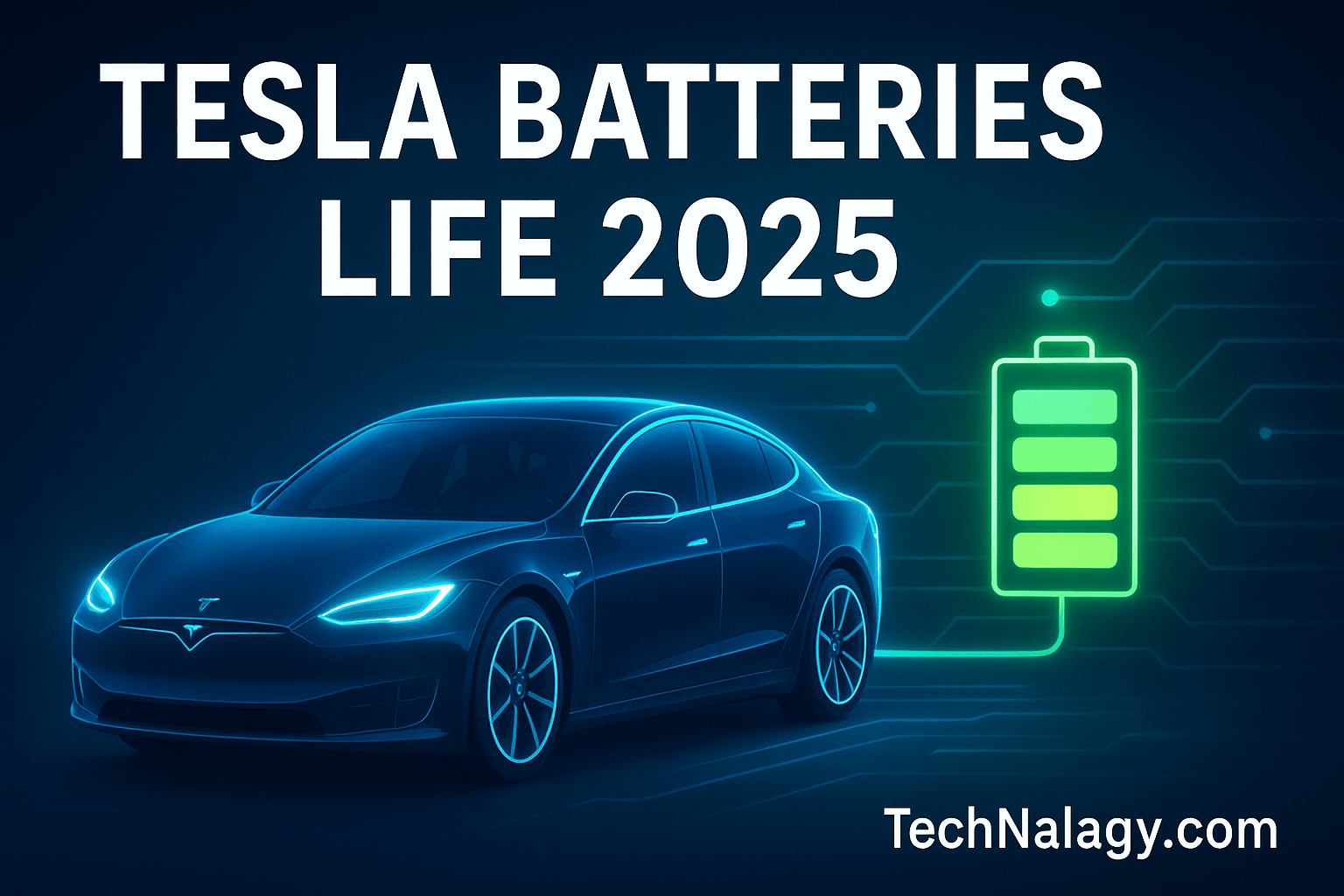Tesla Batteries Life: How Long Do They Really Last in 2025?
Electric vehicles (EVs) have taken the automotive world by storm, and at the heart of this revolution is Tesla’s battery technology. With more people shifting toward sustainable transport, one of the most common questions remains: What is Tesla batteries life, and how long do they actually last in 2025?
The answer isn’t simple—it depends on how you charge, drive, and maintain your Tesla. In this article, we’ll dive deep into Tesla’s battery lifespan, warranty coverage, maintenance tips, and future innovations that may change the EV landscape forever.
Table of Contents
Understanding Tesla Batteries Life in 2025
Tesla batteries are not like the AA cells in your remote—they’re advanced lithium-ion packs designed to last for years of heavy use. On average, a Tesla battery can last between 300,000 to 500,000 miles before significant degradation occurs. In real-world terms, that’s about 15–20 years of driving for the average user.
Tesla’s latest 4680 battery cells promise even longer life, more range, and better charging speeds. Compared to earlier battery generations, today’s Tesla owners in 2025 can expect improved efficiency and slower degradation.
What Affects Tesla Batteries Life?
Several factors influence how long Tesla batteries last, and understanding them can help maximize their performance.
Charging Habits and Frequency
Frequent use of Superchargers may accelerate battery wear, while slower home charging is gentler. Tesla recommends charging daily to 80–90%, saving the full 100% charge for long road trips.
Driving Style and Conditions
Aggressive acceleration, frequent high-speed driving, and extreme climates can shorten Tesla batteries life. Owners in very hot or cold regions may see slightly faster degradation compared to those in moderate climates.
Tesla’s Built-in Battery Management System (BMS)
Tesla uses advanced software to protect the battery from overcharging, overheating, and deep discharges. Regular over-the-air updates also optimize battery efficiency and extend lifespan.
Tesla’s Warranty and Battery Replacement Policy
As of 2025, Tesla offers a battery and drive unit warranty that typically covers 8 years or 120,000–150,000 miles, depending on the model.
While replacements are rare, they can be costly—ranging from $12,000 to $20,000 depending on the vehicle. Fortunately, most owners never face full replacements thanks to Tesla’s robust technology and careful design. Real-world cases show many Teslas retain over 80% battery capacity even after 200,000 miles.
Comparing Tesla Batteries Life with Other EVs
Tesla continues to lead the EV battery race, but competition is growing.
- Rivian offers similar warranties but hasn’t matched Tesla’s long-term proven data.
- Lucid Motors focuses on ultra-long range, though Tesla still wins in reliability.
- Traditional automakers like Ford and GM are catching up, but Tesla’s decade-long head start keeps it ahead in battery durability.
Tesla’s reputation for long-lasting batteries is one of the main reasons its resale values remain higher than most competitors.
Tips to Maximize Tesla Batteries Life
Best Charging Practices
- Keep daily charge between 20%–90%.
- Use home charging for regular use and reserve Supercharging for long trips.
Seasonal Care for Battery Health
- In cold climates, precondition your battery before driving.
- In hot climates, avoid leaving your Tesla fully charged in the sun for long periods.
Smart Connectivity Features
Tesla’s software tools make it easy to monitor and optimize energy use. With Tesla Premium Connectivity 2025, drivers can track real-time efficiency, charging station locations, and predictive battery ranges—all of which contribute to extending overall battery life.
Future of Tesla Batteries in 2025 and Beyond
Tesla’s focus on the 4680 battery cell is a game-changer. These new cells promise:
- Higher energy density.
- Lower production costs.
- Longer cycle life.
Research into solid-state batteries is also underway, which could eventually double the lifespan of EV batteries while reducing charging times to just minutes. If successful, Tesla batteries life could stretch well beyond half a million miles, making EVs truly lifetime vehicles.
Debunking Common Myths About Tesla Batteries Life
- “Do Tesla batteries die after 8 years?”
No—most retain 70–80% capacity well beyond the warranty period. - “Does fast charging always kill the battery?”
Occasional Supercharging is fine. It only impacts longevity if used as the main charging method. - “Do Teslas need battery replacements often?”
Very rarely. Most owners never replace the original battery during ownership.
Expert Opinions and Industry Insights
Industry experts agree Tesla sets the benchmark for EV battery life. According to a Bloomberg report on Tesla battery innovation, advancements in manufacturing and materials have given Tesla a significant lead over rivals. Analysts predict Tesla batteries could soon last one million miles, redefining what car ownership means in the EV era.
Conclusion
So, how long do Tesla batteries really last in 2025? The answer is reassuring: with proper care, Tesla batteries can easily outlast the car itself, providing 15–20 years of reliable performance.
By following best practices, using Tesla’s smart connectivity features, and benefiting from cutting-edge technology like the 4680 cell, owners can maximize both lifespan and value.
Tesla has redefined expectations for EV durability, and as innovations continue, the future of Tesla batteries life looks brighter—and longer—than ever.

Kamran Khatri is the founder of technalagy.com, where he shares insights on AI, future tech, gadgets, smart homes, and the latest tech news. Passionate about making innovation simple and accessible, he writes guides, reviews, and opinions that help readers stay ahead in the digital world.







